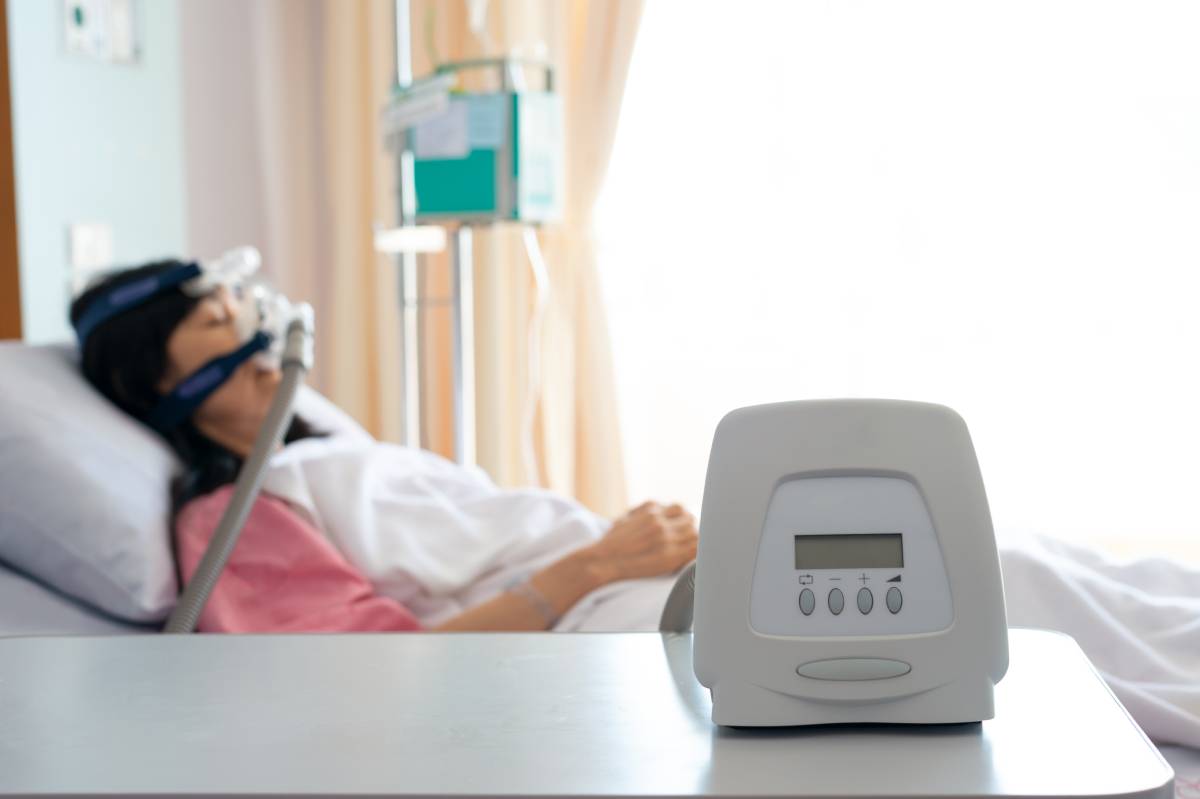Obstructive sleep apnea (OSA), which affects 17% of women and 34% of men in the United States, is characterized by recurring episodes of collapse of the upper airway, resulting in hypopnea (reduced breathing) or apnea (no breathing) lasting at least 10 seconds, during sleep. Its most common symptom is sleepiness during the day—which has shown to contribute to impaired work and driving performances in patients—but the disorder can lead to even more serious consequences: OSA is associated with an increased incidence of hypertension, type 2 diabetes, atrial fibrillation, heart failure, coronary heart disease, stroke, and death.1 It is also a major concern if a patient needs anesthesia care. As a result, developing effective treatments for sleep apnea is an important area of medical research and innovation.
Appropriate treatments for sleep apnea can vary based on the severity of its presentation. For some patients, certain behavioral measures can result in a significant reduction in OSA symptoms. For instance, because obesity is a common risk factor for OSA and because weight-loss interventions have been associated with improvements in the severity of OSA, the American Thoracic Society recommends in their guidelines that clinicians incorporate weight management strategies into their treatment of overweight or obese adults with OSA.2 Independently of weight loss, exercise has also been associated with decreased severity in mild to moderate OSA,3 as well as abstaining from alcohol and restricting sleep to a side or prone position.1,4 For symptomatic OSA of any severity, positive airway pressure (PAP) devices are a primary therapy; PAP devices provide positive pressure to the airway through a mask to patients during sleep to keep the airway open and have been shown to reduce comorbidities such as high blood pressure in addition to alleviating the symptoms.5,6 Bariatric surgery to modify the upper airway is often recommended for symptomatic patients unable to tolerate PAP therapy, with the most extensively studied procedure being uvulopalatopharyngoplasty, a process involving the resection of the uvula and part of the soft palate.1 It is notable that more invasive treatments for OSA, such as surgical interventions, have been postponed or forgone for many patients during the COVID-19 pandemic.7
Finally, hypoglossal nerve stimulation (HNS) therapy has recently been proposed as a potential treatment for OSA that could address the airway collapsibility associated with the disease without altering upper airway anatomy. This therapy, which involves a single surgical procedure to implant the device, has the potential to provide multilevel upper airway improvement and has shown early success within limited subsets of the OSA population.8 Another novel device designed to alleviate the symptoms of OSA was approved earlier this year by the U.S. Food and Drug Administration for marketing: the eXciteOSA device, designed for “tongue strengthening.” This device, used while the patient is awake, contains four electrodes which give muscle stimulation in a series of electrical pulses and is meant to increase the muscle tone of the tongue, which could actively work to help keep the airway open during sleep. While this device has only been used to aid those with mild sleep apnea and has not yet been proven to alleviate symptoms other than snoring, it is still an exciting development for a disorder for which novel treatments are sorely needed.9
References
(1) Gottlieb, D. J.; Punjabi, N. M. Diagnosis and Management of Obstructive Sleep Apnea: A Review. JAMA 2020, 323 (14), 1389. https://doi.org/10.1001/jama.2020.3514.
(2) Hudgel, D. W.; Patel, S. R.; Ahasic, A. M.; Bartlett, S. J.; Bessesen, D. H.; Coaker, M. A.; Fiander, P. M.; Grunstein, R. R.; Gurubhagavatula, I.; Kapur, V. K.; Lettieri, C. J.; Naughton, M. T.; Owens, R. L.; Pepin, J.-L. D.; Tuomilehto, H.; Wilson, K. C. The Role of Weight Management in the Treatment of Adult Obstructive Sleep Apnea. An Official American Thoracic Society Clinical Practice Guideline. Am J Respir Crit Care Med 2018, 198 (6), e70–e87. https://doi.org/10.1164/rccm.201807-1326ST.
(3) Lee-Iannotti, J. K.; Parish, J. M. Exercise as a Treatment for Sleep Apnea. Journal of Clinical Sleep Medicine 2020, 16 (7), 1005–1006. https://doi.org/10.5664/jcsm.8582.
(4) Srijithesh, P. R.; Aghoram, R.; Goel, A.; Dhanya, J. Positional Therapy for Obstructive Sleep Apnoea. Cochrane Database of Systematic Reviews 2019. https://doi.org/10.1002/14651858.CD010990.pub2.
(5) Weaver, T. E.; Maislin, G.; Dinges, D. F.; Bloxham, T.; George, C. F. P.; Greenberg, H.; Kader, G.; Mahowald, M.; Younger, J.; Pack, A. I. Relationship Between Hours of CPAP Use and Achieving Normal Levels of Sleepiness and Daily Functioning. Sleep 2007, 30 (6), 711–719. https://doi.org/10.1093/sleep/30.6.711.
(6) Martínez-García, M.-A.; Capote, F.; Campos-Rodríguez, F.; Lloberes, P.; Díaz de Atauri, M. J.; Somoza, M.; Masa, J. F.; González, M.; Sacristán, L.; Barbé, F.; Durán-Cantolla, J.; Aizpuru, F.; Mañas, E.; Barreiro, B.; Mosteiro, M.; Cebrián, J. J.; de la Peña, M.; García-Río, F.; Maimó, A.; Zapater, J.; Hernández, C.; Grau SanMarti, N.; Montserrat, J. M. Effect of CPAP on Blood Pressure in Patients With Obstructive Sleep Apnea and Resistant Hypertension: The HIPARCO Randomized Clinical Trial. JAMA 2013, 310 (22), 2407. https://doi.org/10.1001/jama.2013.281250.
(7) Bastier, P.-L.; Aisenberg, N.; Durand, F.; Lestang, P.; Abedipour, D.; Gallet de Santerre, O.; Couloigner, V.; Bequignon, E. Treatment of Sleep Apnea by ENT Specialists during the COVID-19 Pandemic. European Annals of Otorhinolaryngology, Head and Neck Diseases 2020, 137 (4), 319–321. https://doi.org/10.1016/j.anorl.2020.05.001.
(8) Whelan, R.; Soose, R. J. Implantable Neurostimulation for Treatment of Sleep Apnea. Otolaryngologic Clinics of North America 2020, 53 (3), 445–457. https://doi.org/10.1016/j.otc.2020.02.007.
(9) Mundell, E.; Reinberg, S. FDA Approves “Tongue Strengthening” Device for Certain Sleep Apnea Patients. Medical Press. February 8, 2021.

